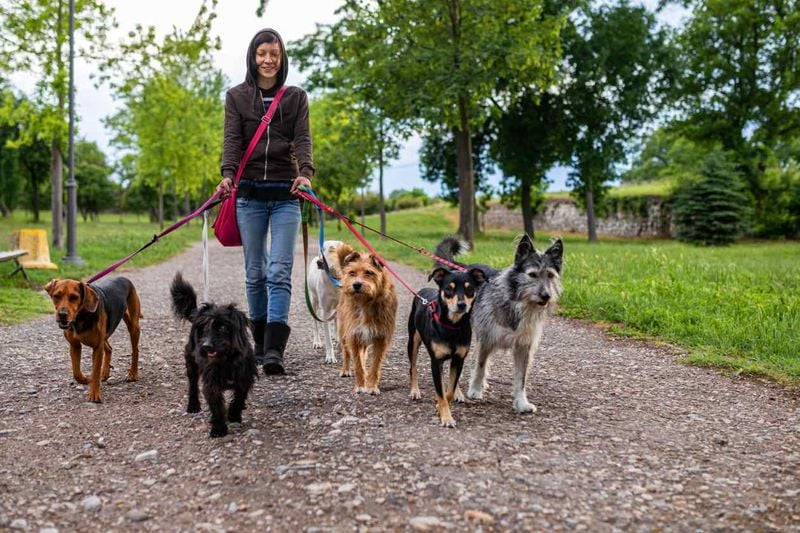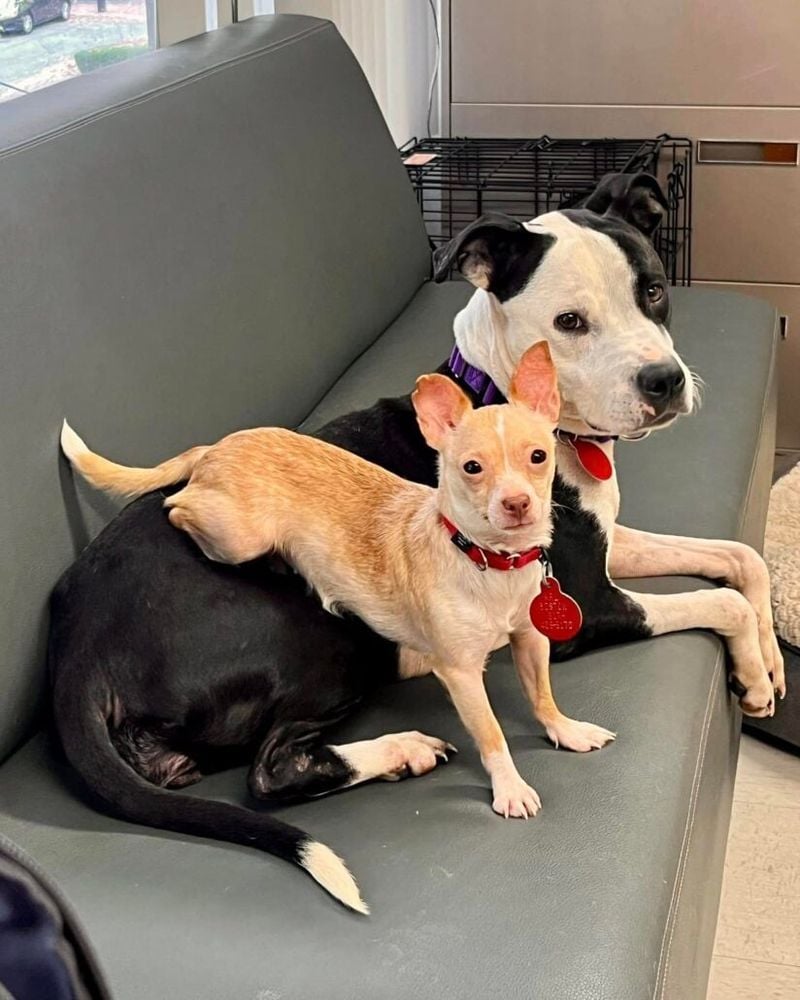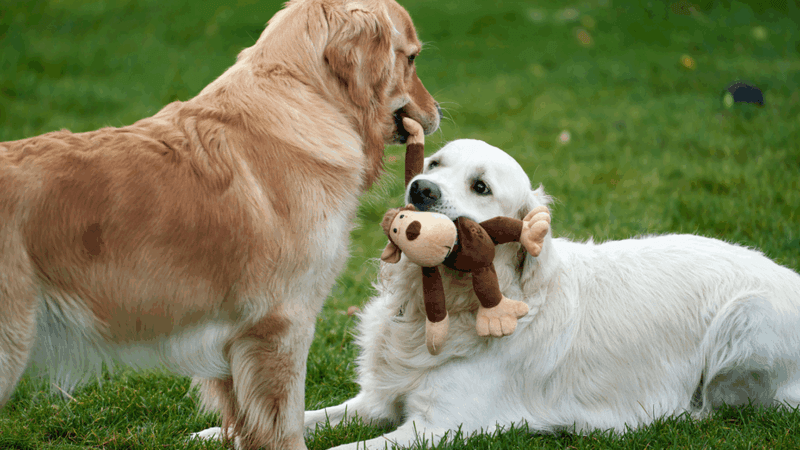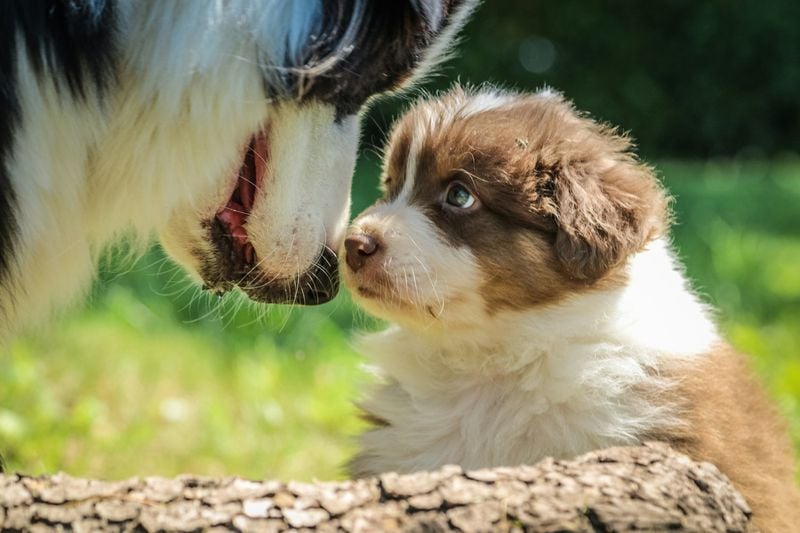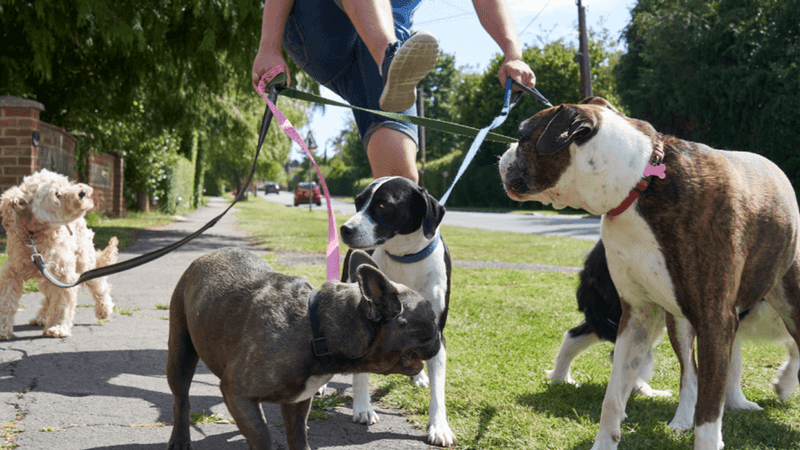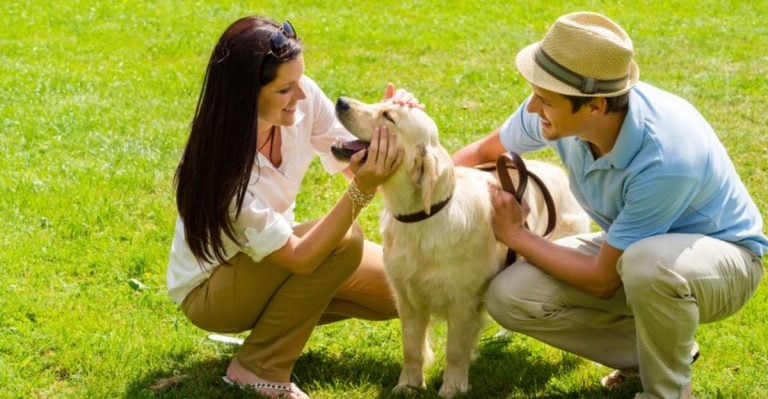11 Heartwarming Perks of Having Multiple Dogs (and 7 Real-Life Struggles)
Bringing a second (or third!) dog into your home can transform your life in wonderful ways. The wagging tails multiply, the cuddle sessions get cozier, and your home fills with even more barks, zooms, and puppy kisses.
But alongside the joy comes a new set of challenges that many dog owners don’t expect. Let’s explore both sides of the multi-dog household adventure!
1. Built-in companionship for your dog
Dogs are pack animals who naturally crave social interaction. When you’re at work or busy around the house, your first dog doesn’t have to wait for human attention – they have a furry friend to keep them company!
Many dog owners report less destructive behavior when pets have buddies. Instead of chewing furniture out of boredom, dogs entertain each other with play sessions and snuggle time.
The friendship between your pups creates a special bond that’s amazing to witness. You’ll catch them sleeping curled up together or playing games they invented themselves – showing how much they appreciate having a constant companion.
2. Double (or triple) the love
Nothing beats coming home to not just one, but multiple wagging tails and excited faces at the door! The sheer joy multiplies with each dog, creating an instant mood boost after a tough day.
Each dog brings their unique personality and affection style to your life. One might be a cuddler who never leaves your side, while another shows love through playful energy or gentle leaning against your leg.
Research shows that interacting with dogs releases oxytocin – the love hormone – in both humans and canines. With multiple dogs, these feel-good chemicals flow even more abundantly throughout your home, creating a genuinely happier environment for everyone.
3. Exercise made easy
Getting your dogs to burn energy becomes significantly simpler when they have playmates. They’ll chase each other around the yard, wrestling and running until they’re happily tired – without you having to throw a ball for hours!
The natural competition between dogs often motivates them to be more active. When one starts running, the others typically join in, creating an automatic exercise system that keeps everyone fit and healthy.
Multi-dog households often report better-behaved pups simply because they’re properly exercised. A tired dog is generally a good dog, and when they wear each other out through play, you’ll likely see fewer behavior problems stemming from pent-up energy.
4. Social skills get sharper
Dogs living with canine siblings learn crucial social cues that single dogs might miss. They develop an understanding of body language, appropriate play intensity, and respecting boundaries through daily interactions.
These enhanced social skills often translate to better behavior during dog park visits or when meeting new dogs on walks. Multi-dog household pups typically know how to greet other dogs properly and read warning signals that indicate when to back off.
The confidence gained from navigating relationships at home helps dogs become more balanced overall. They learn patience while waiting for toys, food, or attention – valuable lessons that make them more pleasant companions in all situations.
5. Lower risk of separation anxiety
Dogs with furry companions rarely experience the intense loneliness that can trigger separation anxiety. Having a buddy provides comfort and security when humans leave the house, reducing stress-related behaviors like excessive barking or destructive chewing.
The routine of home life continues even when you’re gone because dogs maintain their social structure. They’ll still play, nap, and patrol the windows together, keeping their minds engaged instead of focusing on your absence.
Many former shelter dogs who struggled with being alone thrive in multi-dog homes. The stability of always having company helps heal past trauma from abandonment, creating a more emotionally balanced pet who can better handle brief separations.
6. It can be easier than you think
Surprisingly, two dogs often require less than twice the work of one! Once you’ve established routines for feeding, walking, and basic care, adding another dog to the mix doesn’t significantly increase your workload.
Many tasks become more efficient with multiple dogs. Training sessions can happen simultaneously, walks cover the same distance regardless of how many leashes you hold, and playtime in the backyard serves all your pups at once.
The dogs themselves share responsibilities by keeping each other entertained. When they play together during the day, they’re less likely to demand constant human attention, giving you breathing room that single-dog owners might not experience.
7. A fuller life experience
Multiple dogs bring diverse personalities into your home, creating a richer daily experience. Each dog’s unique quirks – from the goofy one who sleeps upside-down to the serious one who guards the front window – add layers of joy to everyday life.
The interactions between your dogs provide endless entertainment. You’ll witness complex social dynamics, hilarious play sessions, and touching moments of unexpected kindness as they share toys or comfort each other during thunderstorms.
Many multi-dog owners describe feeling like they’re watching a constantly evolving story unfold in their homes. The changing relationships and amusing incidents create memories that single-dog households simply can’t replicate.
8. Enhanced family bonding
Multiple dogs create more opportunities for family members to connect with pets individually. Children can each have their special canine buddy, reducing sibling rivalry over the family pet while teaching responsibility.
Caring for several dogs together strengthens human relationships too. Couples and families share amusing stories about their dogs’ antics, work as a team during training, and support each other through challenges like veterinary emergencies.
The shared joy of watching dogs play together becomes a family bonding activity in itself. Many households develop traditions around their pack – from Sunday hikes to holiday photos featuring all family members, both two-legged and four-legged.
9. Rescue more lives
Opening your home to multiple dogs means more animals find loving families. With millions of dogs euthanized in shelters each year, every adoption makes a difference – and multi-dog households multiply that impact.
Older or special-needs dogs often thrive when paired with stable canine companions. Many rescues who struggled in shelters blossom in homes with confident resident dogs who show them the ropes and help them feel secure.
Adopting bonded pairs keeps dogs together who might otherwise be separated. Shelters frequently have siblings or friends who’ve shared kennels and formed deep attachments – by taking both, you preserve these meaningful relationships while saving two lives instead of one.
10. Perfect for pack-oriented breeds
Some dog breeds particularly flourish with canine companionship. Huskies, beagles, and other pack-oriented breeds often display fewer behavior problems when they have dog friends who satisfy their deep social needs.
Working breeds like border collies and Australian shepherds can direct their herding instincts toward appropriate targets – other dogs – rather than chasing children or cars. Their natural tendencies find proper outlets through play with fellow canines.
Historically pack-hunting dogs such as hounds maintain better mental health with companions. These breeds were never meant to live solitary lives, and their contentment visibly increases when they can engage in natural behaviors like group exploration and coordinated play.
11. Your dogs will teach each other
Dogs are natural mimics who learn rapidly from watching other dogs. A well-trained resident dog often helps teach house rules to newcomers, showing them where to potty, when to be calm, and how to behave during mealtimes.
Confident dogs can help shy or fearful dogs overcome anxieties. Many owners report remarkable transformations as timid rescues gain courage by following the lead of their more self-assured canine housemates during walks or when meeting strangers.
Even bad habits sometimes resolve through peer pressure! A dog who barks excessively might quiet down when living with calmer dogs, while a food thief might learn boundaries after observing others respecting the rules.
12. Higher costs
The financial reality of multiple dogs can’t be ignored. Veterinary care multiplies with each additional pet – annual checkups, vaccinations, preventative medications, and unexpected illnesses or injuries can stretch your budget thin.
Food costs increase substantially, especially if you provide high-quality nutrition. Large or active breeds might consume surprising amounts of kibble, and special diets for dogs with health issues cost even more.
Additional expenses pop up everywhere: more dog beds, extra toys that need regular replacement, multiple leashes and collars, professional grooming appointments, and higher pet deposits when renting. Even pet insurance premiums stack up quickly when covering multiple furry family members.
13. Time commitment increases
Each dog deserves individual attention beyond group activities. Finding time for one-on-one walks, training sessions, and cuddles becomes challenging with multiple dogs competing for your limited hours.
Grooming demands multiply dramatically, especially with heavy shedders or breeds needing regular haircuts. What was once a quick brushing session becomes a major time investment when you’re maintaining several coats.
The logistics of daily care grow more complex. Feeding times might need supervision to prevent food stealing, bathroom breaks require vigilance to ensure everyone does their business, and bedtime routines expand as each dog settles into their spot. These small tasks add up to significant time commitments that can overwhelm busy households.
14. Potential for jealousy
Dogs develop strong bonds with their humans and don’t always want to share attention. Resource guarding can emerge even in otherwise sweet-tempered pets when they feel threatened by another dog’s presence near valued people or items.
The competition for prime spots – like your bed or favorite couch – sometimes leads to tension. Dogs naturally establish hierarchies, and disputes over comfortable resting places or choice toys can escalate into serious conflicts if not properly managed.
Humans inadvertently worsen jealousy by showing favoritism. Even subtle preferences, like greeting one dog first or giving extra treats to another, get noticed by these perceptive animals and potentially fuel resentment that manifests as problem behaviors.
15. Introducing a new dog isn’t always easy
The integration period can be stressful for everyone involved. Resident dogs may feel their territory is threatened, while newcomers must navigate unfamiliar surroundings and establish their place in an existing social structure.
Some dogs require weeks or even months to fully accept new housemates. During this adjustment phase, you might need to manage separate feeding areas, carefully supervise all interactions, and deal with occasional disagreements that disrupt household peace.
Personality conflicts sometimes persist despite your best efforts. Not all dogs naturally get along, and forcing incompatible animals to live together can create ongoing stress. The heartbreaking reality is that some combinations simply don’t work, requiring difficult decisions about rehoming.
16. Travel and boarding complications
Finding pet-friendly accommodations becomes exponentially harder with multiple dogs. Many hotels limit guests to one pet per room, and vacation rentals often charge additional fees for each animal – if they accept pets at all.
Road trips require strategic planning when traveling with a pack. The car needs space for crates or safety harnesses, rest stops take longer with multiple bathroom breaks, and managing several excited dogs in unfamiliar places demands constant vigilance.
Boarding costs skyrocket when you can’t bring your dogs along. Premium kennels charge per pet, quickly turning a weekend getaway into a major expense. Finding trustworthy pet sitters willing to handle multiple dogs presents another challenge, as many have limits on how many animals they’ll care for simultaneously.
17. Training can get complex
Dogs learn from each other – for better or worse. When one dog develops an unwanted behavior like counter-surfing or excessive barking, others often follow suit, creating a frustrating chain reaction of misbehavior.
Training sessions frequently derail when multiple dogs compete for treats and attention. Teaching new commands requires separating dogs initially, which adds significant time to the training process and tests your patience.
Leash walking becomes particularly challenging with several dogs. Different walking speeds, varying interests in environmental smells, and the physics of tangling leashes can transform a simple stroll into a stressful event. Many multi-dog owners eventually invest in professional training to restore household harmony.
18. Managing pack dynamics
Dogs naturally establish hierarchies, sometimes leading to power struggles that require human intervention. Understanding canine body language becomes essential as subtle posturing, resource guarding, or mounting behaviors indicate tension that could escalate if ignored.
The dynamics shift when dogs age or health status changes. Younger packmates may challenge a once-dominant dog as they mature or when illness weakens the established leader, creating periods of instability that demand careful management.
Some breeds have stronger tendencies toward dominance or same-sex aggression. These natural inclinations require knowledgeable handling to prevent serious conflicts, especially during high-arousal situations like mealtimes or when visitors arrive.






